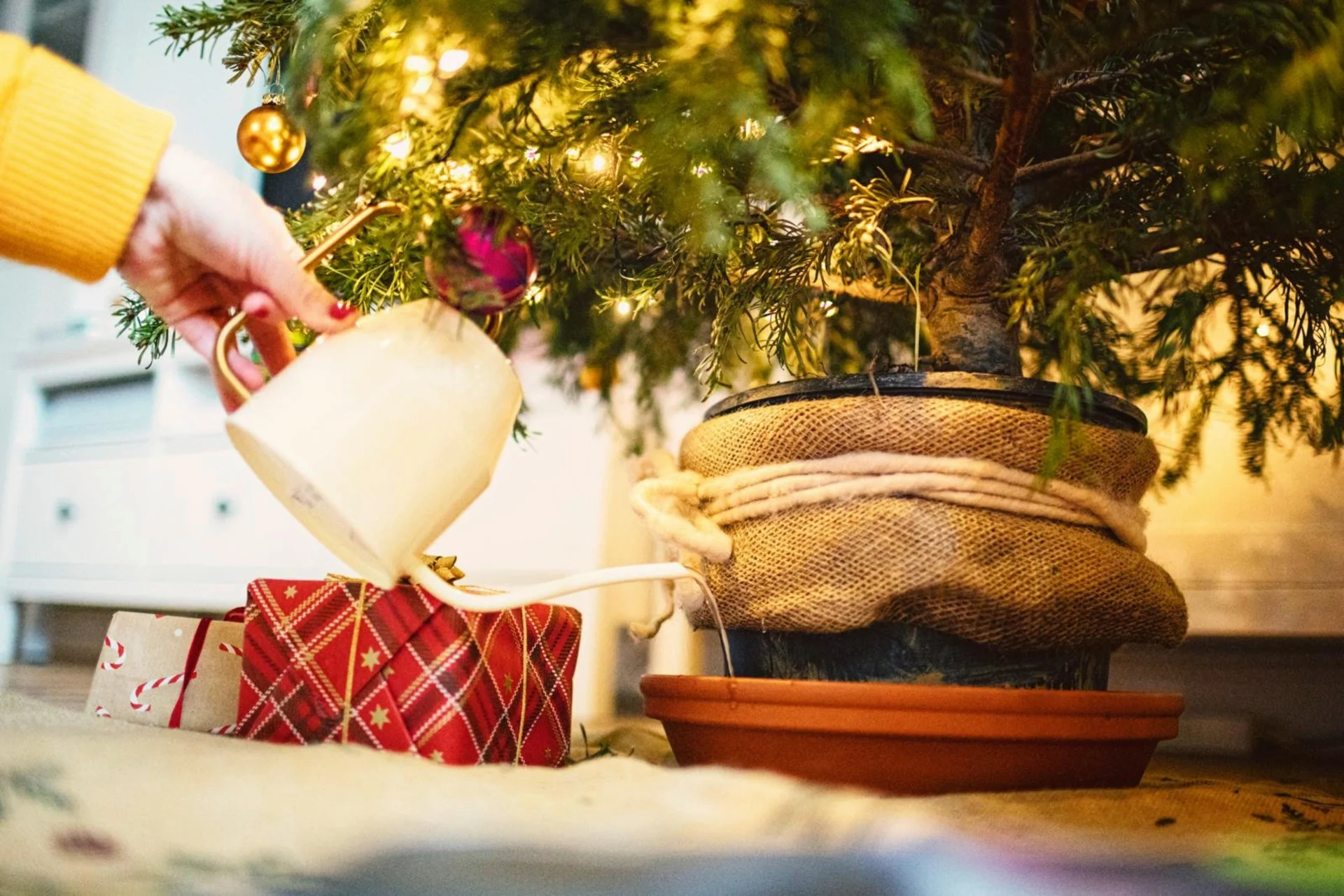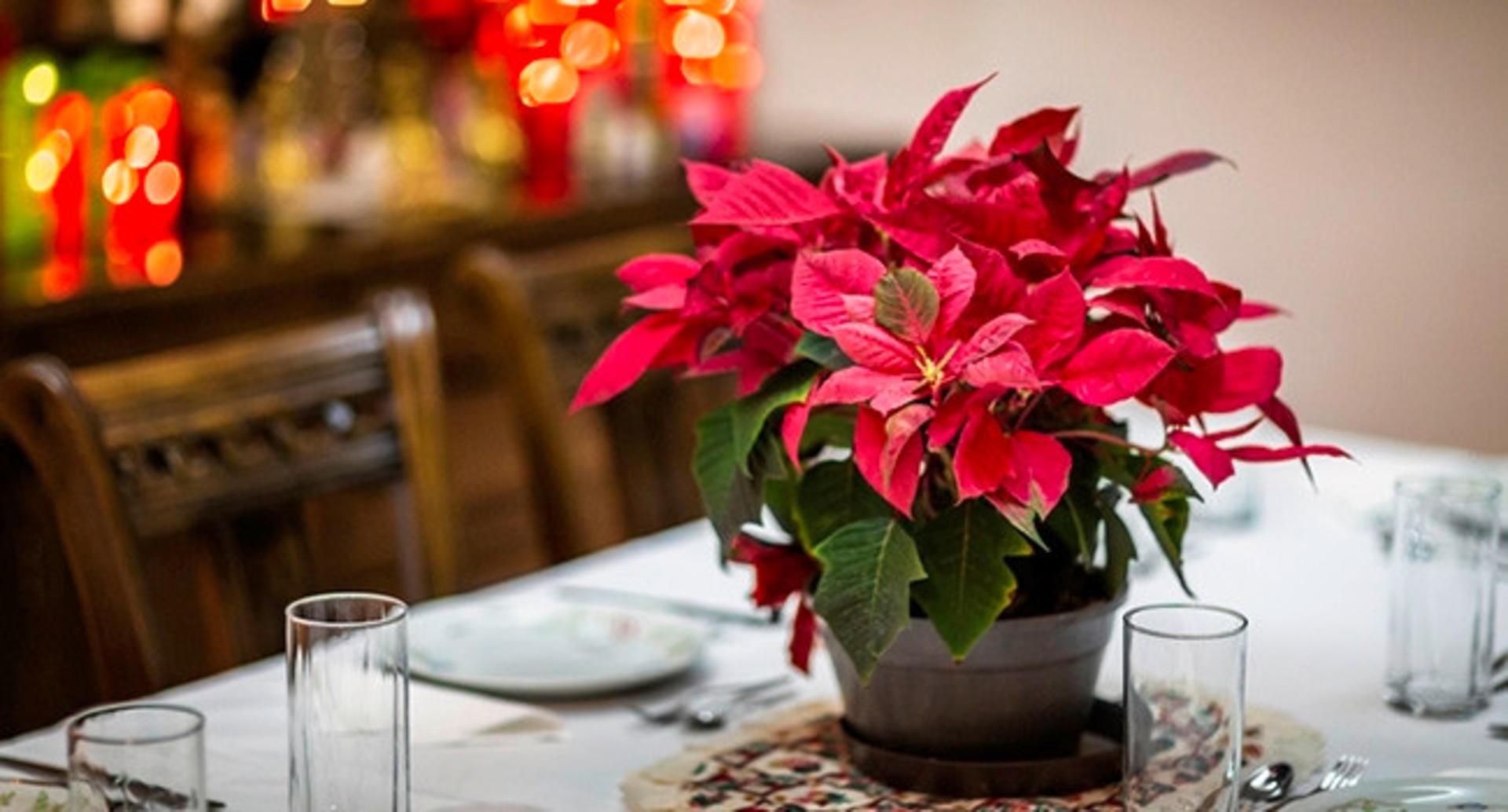
Sustainability
How to keep your Christmas tree fresh for longer
Their step-by-step instructions will ensure that your Christmas tree will hold onto its needles for a long time.
navigation

Flowers & plants
It’s as much a part of Christmas as the tree: the poinsettia. When looked after correctly, this Mexico-native plant can live for years.
Poinsettias like light, so they should be placed near a window. However, they should not be exposed to direct sunlight – they don’t like that at all. They are very sensitive to heat and cold. The ideal room temperature is between 15 and 22 degrees. If the plant is too cold or exposed to draughts, it will lose its leaves.
You should regularly water your poinsettias with lukewarm water, or you can dip them into a water bath as an alternative. You should water the plant when the top layer of soil feels dry. Ideally, keep a plate under the pot when you’re watering. If the plant gets too dry, it will lose its leaves. However, it is usually able to recover. It’s a different case if the plant becomes too damp or waterlogged. Then the leaves will turn yellow and eventually fall off, while the roots begin too rot. In the worst case, the plant will die.
Poinsettias do not need fertiliser during the flowering period. After that, it is sufficient to give them a little fertiliser with their water once a month.
The red leaves of the plant are not actually flowers, but rather discoloured bracts. The flowers themselves are rather unremarkable. For the plant to develop these coloured leaves at Christmas, it must first be kept in complete darkness for at least 12 hours a day for at least 8 weeks. Even small amounts of light during this dark period can prevent the poinsettia from blooming. In other words, you can decide for yourself when the poinsettia should bloom.
In spring, around April, the poinsettia loses its colourful leaves. However, this is no reason to throw it away. After all, poinsettias are perennial plants that grow into shrubs. To keep the plant developing well, you should repot it – ideally at the beginning of its growth phase in April. At this point, it needs fertiliser every 14 days.
Poinsettias belong to the spurge family and are toxic. The white sap of the plants doesn’t agree with dogs, cats and birds at all. The classic symptoms of poisoning include vomiting, trembling, salivation and muscle cramps. This can be followed by diarrhoea and kidney failure. Should you notice any signs of poisoning, you must contact a veterinarian as soon as possible.
The yellow-green flowers between the coloured bracts should be budded. Dense, green leaves without signs of damage indicate a healthy plant. Ideally, don’t buy plants with yellow leaves. During transport, you must ensure that the plant is well packaged as it is very sensitive to cold.
Published 10.12.2021, revised 5.12.2024
Discover exciting stories about all aspects of Migros, our commitment and the people behind it. We also provide practical advice for everyday life.